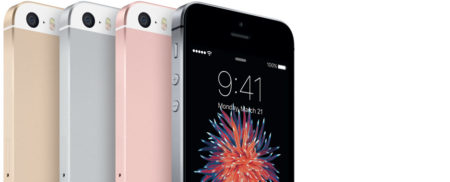
By Craig Wilson
Last Wednesday, photographer and blogger Trey Ratcliff caused an uproar online when he suggested that digital single-lens reflex (DSLR) cameras are doomed because of the advances in so-called “mirrorless” cameras. The leading-edge brigade praised him, while others hurled vitriol and derision. So, which group, if either, is right?
First, a little photographic history to put things in perspective is in order.
Early cameras required a shoot-and-hope approach because they had no viewfinders — that is, no way of seeing what the lens did. The single-lens reflex (SLR) camera offered an elegant solution — by using a mirror angled at 45 degrees it was possible to see what a camera’s lens did and capture an image using the same lens. So elegant was the solution that it remains the backbone of contemporary high-end cameras.
However, in the age of digital photography, having a mirror that requires a physical mechanism — so said mirror can get out of the way to allow the light passing through the lens to hit the sensor rather than pass through the viewfinder — is akin to having a wind up wrist watch.
There are three main problems with having a mechanical mirror in your camera. For starters, the movement involved in creating an exposure introduces vibrations, which affect image sharpness.
Then there’s the dust that this movement flings around.
Finally, there’s the problem of size — DSLRs (and SLRs before them) and their lenses are the size they are because they have to accommodate this mirror. In the case of camera bodies, that means having enough space between the sensor and the lens for the mirror and its movement, and it means larger lenses because of the need to project the image across this space created for the mirror.
All compact cameras are mirrorless, and one of the benefits of this is that they can be extremely compact because the space between the lens and the sensor can be miniscule, resulting in smaller lenses and bodies. The problem, however, is that a smaller sensor leads to lower quality images.
However, as camera phones continue to demonstrate, sensors are getting better at a rate of knots. Moreover, camera manufacturers are putting larger sensors in mirrorless bodies. Both Sony’s NEX and Samsung’s NX ranges of mirrorless cameras employ APS-C sensors, which are the same size as those found in all except professional-grade DSLRs. Top-end DSLRs have what are commonly called full-frame sensors, which simply means the sensor is same size as a traditional 35mm frame of film, or 36x24mm.
German manufacturer Leica, meanwhile, has gone as far as creating a mirrorless full-frame digital camera, the wallet-draining M9. If mirrorless cameras can offer the same image quality in a more compact — and particularly in the case of lenses, potentially cheaper — end product, why wouldn’t we want them?
For some, the answer to that question is the viewfinder. The SLR proved so popular because what you saw through the optical viewfinder was exactly what you saw through the lens, in real time. Digital viewfinders, meanwhile, simply haven’t caught up, and neither — many would argue — have LCD screens. The primary argument against mirrorless cameras is that composing with an LCD simply isn’t as good as an optical viewfinder.
This, however, is guaranteed to change. Just as LCDs on digital cameras have become bigger, they’ve also got better, and will continue to do so. Another argument leveled by DSLR enthusiasts — who, considering their oftentimes hefty investments in gear, arguably have a vested interest in the form — is that people don’t take small cameras seriously. There’s certainly some truth in that, but not only is this a perception that will change, but a working professional’s portfolio should convince any naysayer that the tool is less important than the person using it.
Aside from their comparatively diminutive proportions, mirrorless cameras also offer the potential for shooting images at frame rates we could previously only dream of because there is no need for anything to get out of the way between pressing the shutter and capturing the shot.
Really, there’s very little reason not to like them, beyond the fact that they may soon render many a costly camera and lens collection obsolete.
What seems most likely is that professionals of the sort who currently use high-end DSLRs will continue to do so until the mirrorless full-frame technology catches up, and will increasingly look to other niches, like digital medium format cameras of the sort used in fashion photography and which offer unrivaled image quality and resolution, albeit for the price of a new car.
Regardless of whether you’re a professional with enormous, expensive gear, or a keen amateur with a point-and-shoot compact, there’s one thing that won’t change: whether or not your camera has a mirror, having any camera trumps having none. After all, as iPhone camera enthusiast Chase Jarvis says, “the best camera is the one that’s with you”.
- Craig Wilson is senior journalist at TechCentral
- Subscribe to our free daily newsletter
- Follow us on Twitter or on Facebook
- Visit our sister website, SportsCentral (still in beta)




